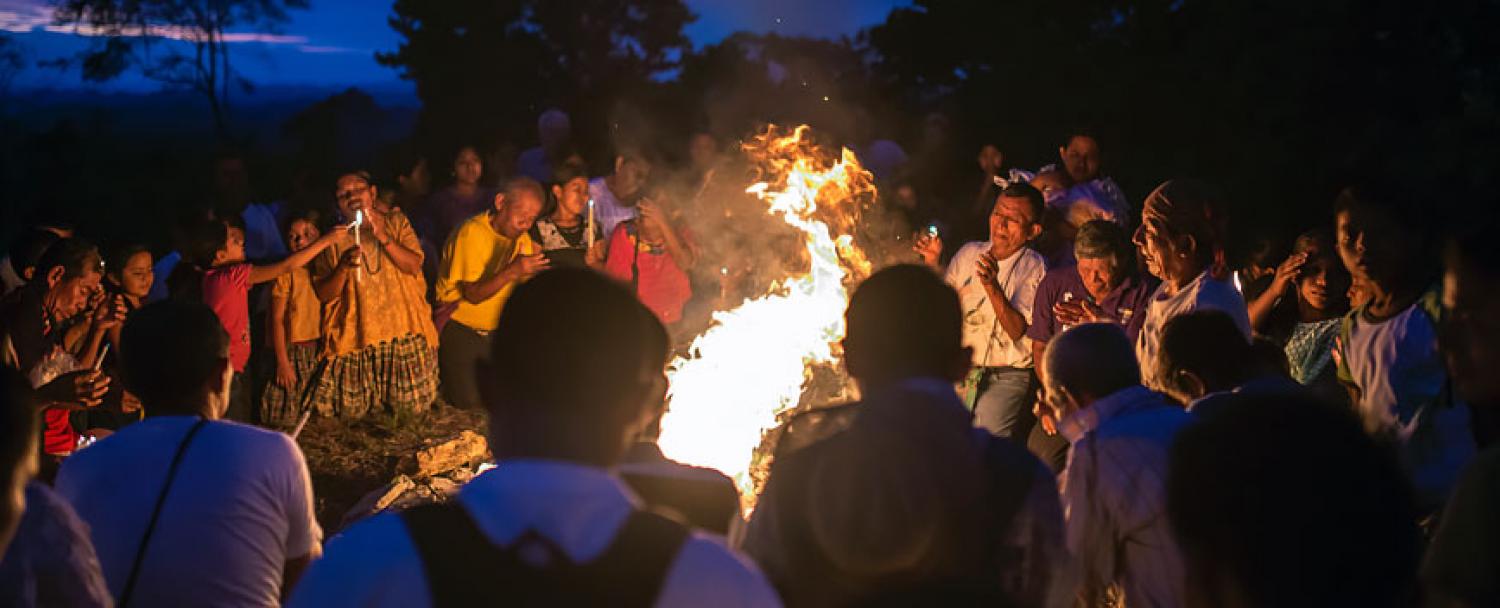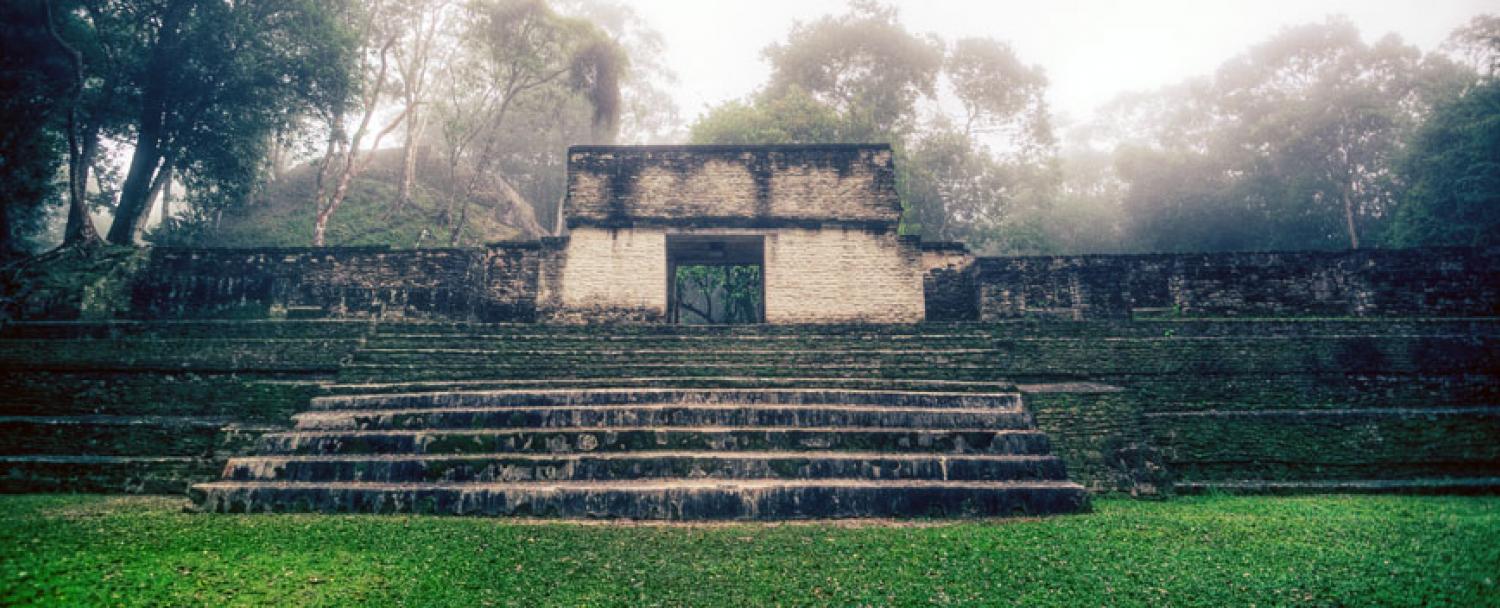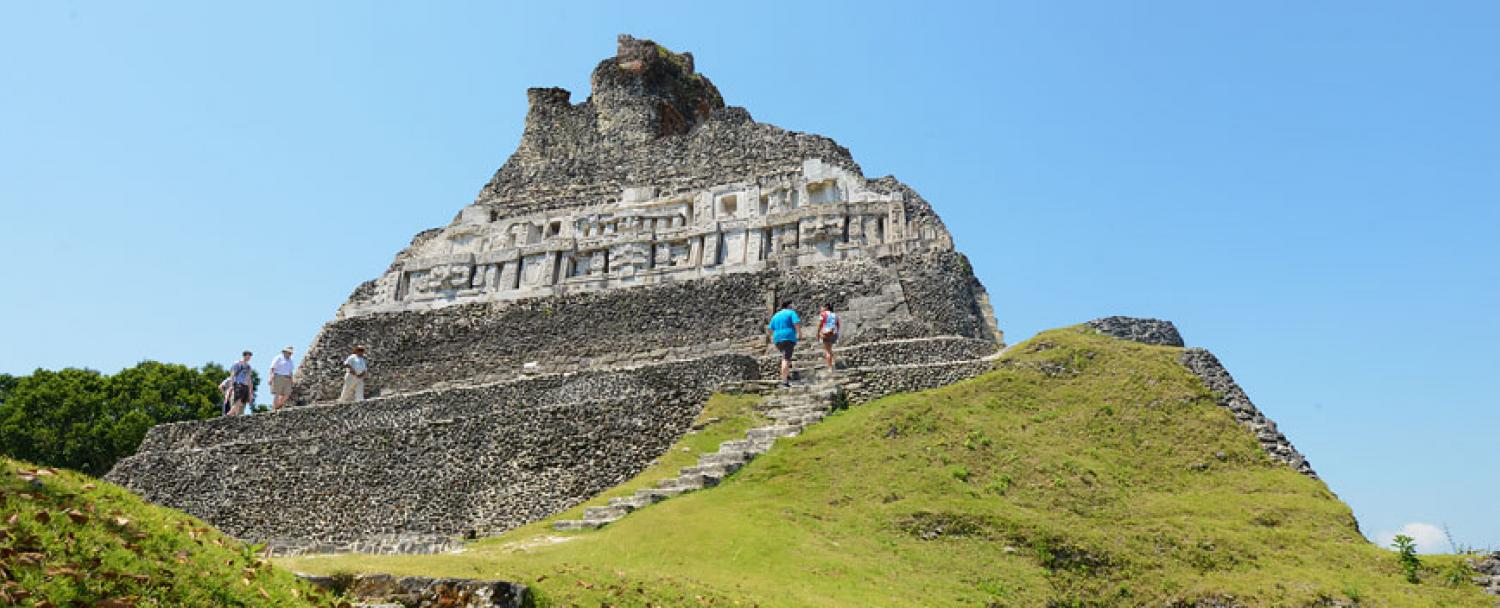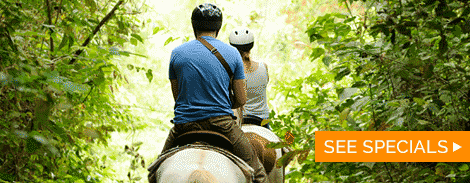Maya Culture & History
Belize’s first and most enduring inhabitants, the Maya, left a rich legacy of art, science and mathematics that continues to unfold and astound us.
Much of this ancient knowledge was lost when Spanish conquistadors laid waste to the extensive Maya libraries and administrative centres, but, fortunately, the Maya recorded parts of their history and predictions in stone inscriptions that can be seen today in stelae and the remains of elaborate cities, buildings and temples that survived centuries of jungle encroachment.
It was only relatively recently that Maya writing, or glyphs, were deciphered and the richness of this advanced jungle civilisation came to light.
Archaeologists and linguists continue to unravel the ancient riddles of Maya Civilization, and we now have a better picture of this intricate, enigmatic Civilization.
History of the Mayans
Today’s Maya are descendants of nomadic people who settled in Belize, Guatemala, Mexico’s Yucatan Peninsula, El Salvador and Honduras.
While the beginning of the early habitation is open to debate, the Maya Long Count Calendar gives a Maya creation date of 11 August, 3114 BC, and traces of Maya habitation at Cuello, in Belize, were recently carbon dated to around 2600 BC.
The Maya Early Preclassic period, from which we have some of the earliest examples of Maya pottery and art, lasted from 1800-900 B.C., and throughout the Middle Preclassic Maya (900-300 B.C.) the civilisation continued to grow, so that by 800 BC, the Maya of the Guatemala Highlands controlled the important jade and obsidian trade routes to the Petén and the Pacific, and by 600 BC were producing and trading cacao.
Mayan Civilization
During the Late Preclassic Maya period (300BC- AD 300), the Maya civilisation continued to flourish as trade routes expanded along with advances in the cultivation of corn and the beginning of more complex agricultural practices, as well as construction of pyramids and urban centres.
Maya society continued to develop based on an intricate cosmology that resulted in complex calendars, writing and astute mathematical calculations.
Maya civilisation advanced to new heights throughout the Classic period of 250 to 900 AD, a time of intellectual, artistic and political development that established the Maya as one of the most advanced civilisations in the world.
It was during this time that Tikal, Caracol, Palenque, Altun Ha, Copán and other remarkable city states were established and flourished.
Innovation in arts, medicine and sciences, especially in the areas of mathematics and astronomy were phenomenal.
For example, by 36 BC the Maya developed the concept of zero – an impressive feat which allowed them to work with heretofore unimaginable sums and dates, and was the basis for astronomical observations and calculations extremely accurate even by today’s standards. In fact, the Maya measurement of the solar year is slightly more accurate than the Georgian Calendar used today.
In addition to reflecting a spiritual world, Maya urban centres were efficiently and pragmatically designed, with the most advanced agricultural practices, water systems and food storage systems in the Americas.
While the rich rainforests of Belize and surrounding areas provided an abundance of game and edible and medicinal plants, and the rivers and seacoast teemed with fish and marine life, the Maya also developed their own crops, fish ponds and irrigation systems.
Caracol, home to what is still the tallest man-made structure in Belize, had a sophisticated water catchment system visible today.
These large metropolises, characterised by imposing temples, broad causeways and open air plazas were also important trade centres.
The Maya were enthusiastic long distance traders, bartering jade, obsidian, cacao, salt and sea shell for gold and other goods from as far away as Panama and the gulf coast of Mexico.
While relatively little remains of their maritime history, the Classic Maya most certainly had extensive trading sea routes and were able sailors.
As the underworld was of particular importance in the Maya cosmology, a vast network of ceremonial caves was established for worship, sacrifice, and divination. This Maya sacred cave system is well preserved and can be seen in Belize today.
The intricacies of Maya society during the Preclassic and Classic periods are also subject to debate, but city-states appear to have consisted of small family settlements of people centred around a royal household dominated by a king –the Kuhul Ajaw - and his court.
The royal family, as intermediaries between the gods and interpreters of time and celestial events, dictated the social, political and religious functions of their polities.
They also established complex relations, alliances and intrigues with neighbouring city-states, and warfare and slave taking were not uncommon.
The Kuhul Ajaw power at home was celebrated – and cemented - with elaborate rituals including human sacrifice and the renowned Maya ball games.
The great Maya centres of the southern lowlands began to decline between 700 and 900 AD, and while no one know exactly why, several theories have been advanced.
Some scholars suggest overpopulation and collapse of the ecosystem as the main cause, or disease epidemics, environmental disaster and other internal shocks, while others propose scenarios that involve foreign invasion, the collapse of trade and other external forces.
A 200 year drought combined with exhaustion of agricultural and natural resources has more recently gained wide acceptance as the most likely cause for the decline of the Maya civilisation.
At any rate, the glorious days of the expansion of Maya empire were over.
The Postclassic period (900 – 1500) saw development in northern areas, especially in Yucatan cities such as Chichen Itza. The Lake Petén Itza ruled over an area which includes present day Flores near the Belize border. However, strife increased between competing city-states and the Maya Empire was in disarray by the time it was conquered by the Spanish in the 17thcentury.
The Spanish conquest of the Maya was a long and brutal campaign. Because there was no central ruler or government, the smaller Maya city-states had to be taken and controlled one by one, and they put up fierce resistance until the last Maya states were subdued in 1697, effectively spelling the end of Maya self rule.
One of the saddest consequences of Spanish rule was the destruction of the vast Maya libraries and along with them, much of recorded Maya history and thought.
The Maya had developed a written language by 200 BC that is considered, along with Sumerian cuneiform and Chinese, to be one of only three independently developed writing systems of the ancient world.
The Maya were also among the world’s earliest and most prolific producers of paper, and their scribes held an elevated position in society.
The Catholic church and in particular the infamous Bishop Diego de Landawere zealous in their determination to destroy any record of Maya religion and thought, and of the tens of thousands of Maya “books” or codices, only fragments of four remain.
Today, the Maya of Belize account for some 11% of the population, living for the most part in communal lands self governed under an alcalde, or village leader system.
Maya language and some traditions survive in these areas, with the Maya supporting themselves through agriculture, hunting and the production of arts and crafts.
The Lodge at Chaa Creek sources much of its fresh produce from a nearby traditional Maya farm, and the Maya Medical Plant Trail is a living pharmacy providing traditional herbs and plants. Increasingly, today’s Maya are looking towards eco-tourism as an income earner.
Contemporary Maya leaders view education, improved health care and the promotion of cultural self esteem as important components for the Maya to participate in modern society while preserving their traditions and cultural identity. Slowly, Maya leaders are participating in the democratic process, and in 1992 Rigoberta Menchu, a Quiche Maya woman in nearby Guatemala won the Nobel Peace prize for bravely and non-violently fighting the oppression and extermination of her people.
Chaa Creek’s Natural History Centre chronicles some of the important research that has been conducted within the resort’s 365 acre private nature preserve, where over 50 ancient Maya structure mounds have been identified.
The beautiful temple pyramid of Xunantunich and the impressive royal palace at Cahal Pech are both nearby, and the ancient metropolises of Tikal and Caracol, both a few hours’ drive today, would have had major influences on Chaa Creek.
Maya studies continue to be a very exciting, dynamic and contentious area of scholarship, with new theories arising as quickly as old ones are debunked.
The Chiquibul National Forest surrounding the extensive (55sq mi) city of Caracol continues to reveal new information and sites as archaeologists use new technology to identify an area whose sheer size and rich heritage promises to supply even further evidence of this incredibly rich, unique and enigmatic civilisation.
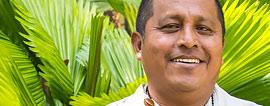
Miguel Choco, Adventure Connoisseur

 This was the best holiday ever!
This was the best holiday ever! 
